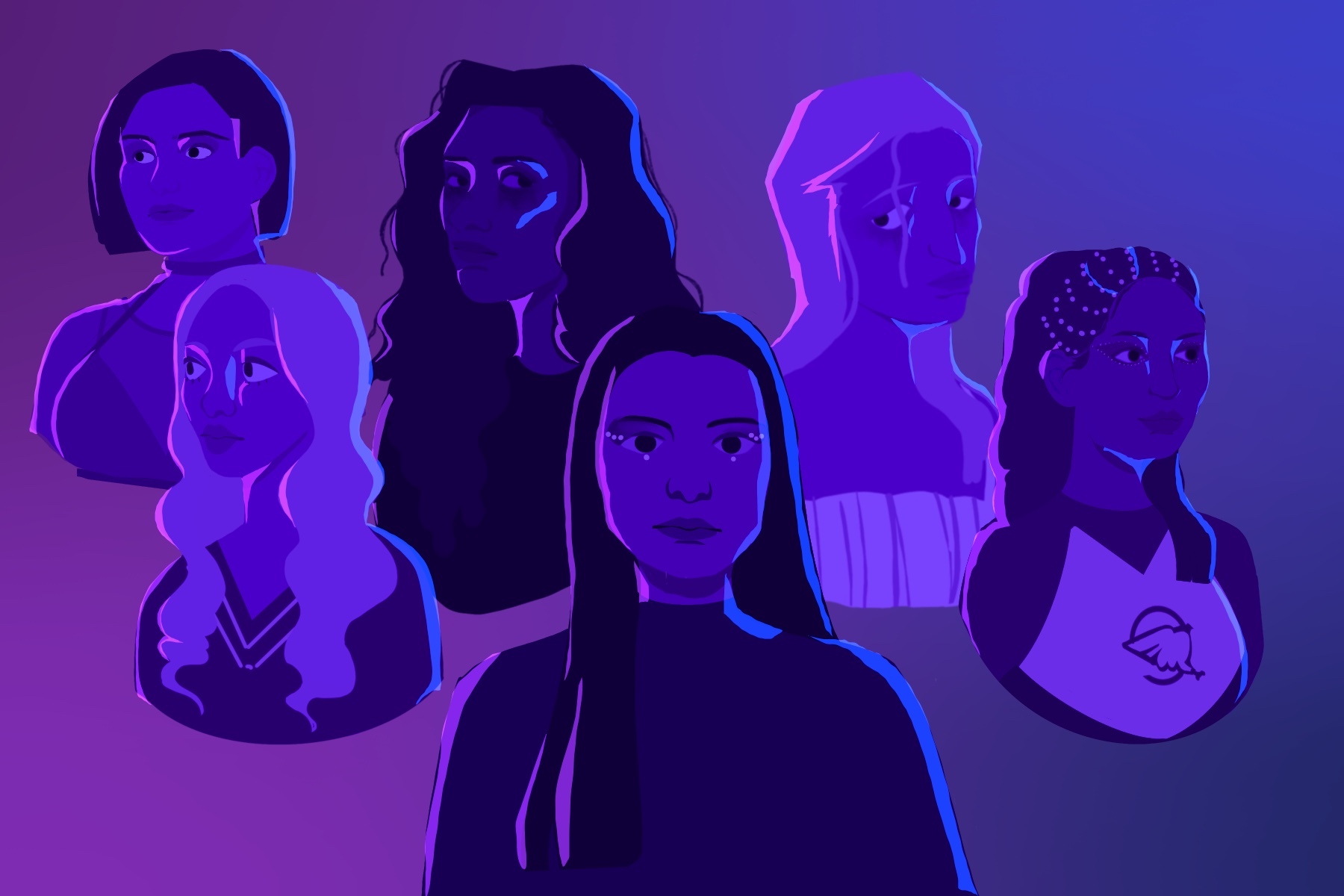After a two-year hiatus, the award-winning show “Euphoria” is back and every Sunday the show releases a new episode. Weekly episodes mean increased anticipation each week, and the show predictably trends on Twitter every Sunday as the makeup and nail looks from the night take over TikTok and Instagram. “Euphoria Sunday” is as much about the show as it is the collective excitement toward a new development every weekend. It shows just how much impact Euphoria has; not only can it win awards, but its fan base is loyal, engaged and growing.
In the 21st century, inclusivity is everything. This is true especially for the show’s main target audience, teens to 20-somethings, who have historically pushed for more diversity and social change in media, politics and workplaces. “Euphoria” has certainly broken new ground for diversity, starring transgender model and actress Hunter Schafer, as well as plus-sized actress Barbie Ferreira. The show’s cast has been celebrated for its range, with stars like Alexa Demie playing alongside them. Zendaya, a lead herself, is a biracial, Black woman who has been highly critical of the racial dynamics within Hollywood. At Beautycon in 2018, Zendaya’s highly publicized critique made rounds in legacy media and Twitter alike. On a panel at the beauty convention, Zendaya spoke of the colorism within Hollywood, saying, “I am Hollywood’s acceptable version of a Black girl.”
“Euphoria” does have its fair share of off-screen drama, though. Rumors of drama between starring actors as well as director Sam Levinson’s refusal of a writing room are discussed alongside each episode’s release and abounding plot twists. However, “Euphoria” has a bigger problem that no one is talking about. Given all its clout for being highly inclusive, it is surprising that “Euphoria” has not yet been called out for its lack of AAPI, or Asian American and Pacific Islander, characters. Technically, “Euphoria” does have an Asian character, singer-songwriter-turned-actor Dominic Fike, who is mixed Filipino and African American. Still, Fike isn’t Asian presenting. This wouldn’t be a problem if “Euphoria” had an Asian presenting character. However, the intention isn’t important: The critical absence is a choice, and the omission is reminiscent of the absent Asian American presence on the American psyche.
“Euphoria,” of course, has had every opportunity to incorporate AAPI actors and actresses in its cast. Although “Euphoria” does not have a specific setting, the show is filmed and produced in California, which is ironically the state with the highest Asian population in the country. In fact, half of the Asian American population lives in the West, with California having the most Asian Americans of any state at 4.2 million. Perhaps an even bigger slap in the face is the fact that casting directors were consciously seeking out lesser-known actors and actresses when casting Seasons 1 and 2.
Primary casting directors Mary Vernieu and Jessica Kelly purposely sought out undiscovered talent after HBO informed them that it wasn’t necessary to cast big names on the project. After all, the casting in “Euphoria” is specifically tailored to “underdogs.” Main characters like Schafer and Angus Cloud had never acted before, and casting directors picked the crew quite literally from the streets of Manhattan. Given that Asian actors and actresses do not have the systemic advantage that their white peers have, this was certainly an opportunity for an oft-ignored demographic. However, for some undisclosed reason, casting directors were willing to take a chance on individuals without any prior professional acting experience for a show whose first season alone was rumored to cost $165 million dollars to produce, yet they were not willing to cast an Asian character.
So why has “Euphoria” not yet been criticized for its exclusive inclusivity? How can a show tout its inclusivity while so obviously only accounting for the confining white and black frame of Hollywood? “Euphoria” hasn’t been criticized because this type of surface-level inclusivity is normal. In his novel, “Interior Chinatown,” Charles Yu describes the world of entertainment as a white and black world. Yu delicately describes the experience of the Asian individual in a country largely concerned with a racial binary, rather than a spectrum. The Asian character, never the speaking character or the main character, is always relegated to the background.
Unfortunately, Yu’s narrative novel isn’t far from the truth. A study by multiple California universities reported that over a one-year period, of the 242 scripted shows on broadcast, cable and streaming television, just one-third had a series regular who was Asian American or Pacific Islander. Ironically, these shows are set in cities with high AAPI populations, such as San Francisco and Los Angeles (33% and 24%, respectively). Another report by the USC Annenberg Inclusion Initiative stated that out of the top 100 films of last year, 37 didn’t include a single Asian character with a speaking role.
The multi-university study, a 10-year follow-up to a 2005 and 2006 study of AAPIs in primetime television, examined 242 TV shows and 2,052 series regulars from broadcast, cable and streaming television scripted shows airing between Sept. 1, 2015, through Aug. 31, 2016. The study’s results showed that white actors dominated the TV landscape in all aspects. Nearly 70% of TV series regulars are white, and at least 96% of TV shows have at least one white series regular.
This shouldn’t come as a surprise considering UCLA and USC have done studies with similar outcomes. As previously mentioned, the new study found that 69.5% of TV series regulars are white, while 14% are Black and 5.9% are Latino. Single race AAPIs make up 4.3%, while multiracial AAPIs account for 2.6%. When all is said and done, 155 out of the 242 shows studied do not have AAPI series regulars. In the 2006 study, 2.6% of the primetime programs evaluated had AAPI series regulars. The new study shows an increase, but one that is still not drastic or dramatic enough.
This dark, coming-of-age television show’s inclusivity problem is a familiar, disappointing echo of longstanding issues in Hollywood. As a show that touts a selective diversity, “Euphoria” remains part of the problem that it claims to evade, and it unfortunately seems like we’re a long way from redemption.

















